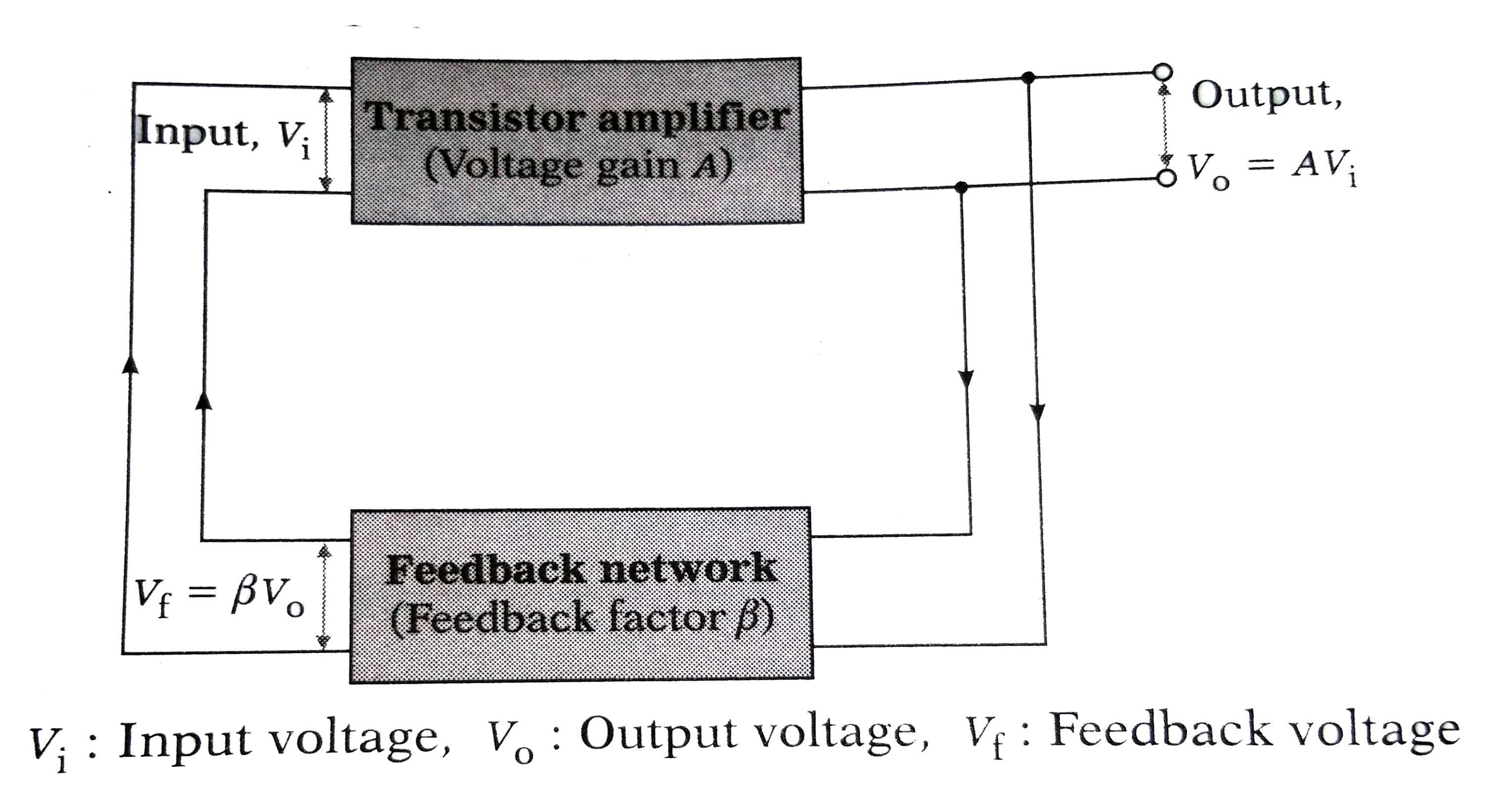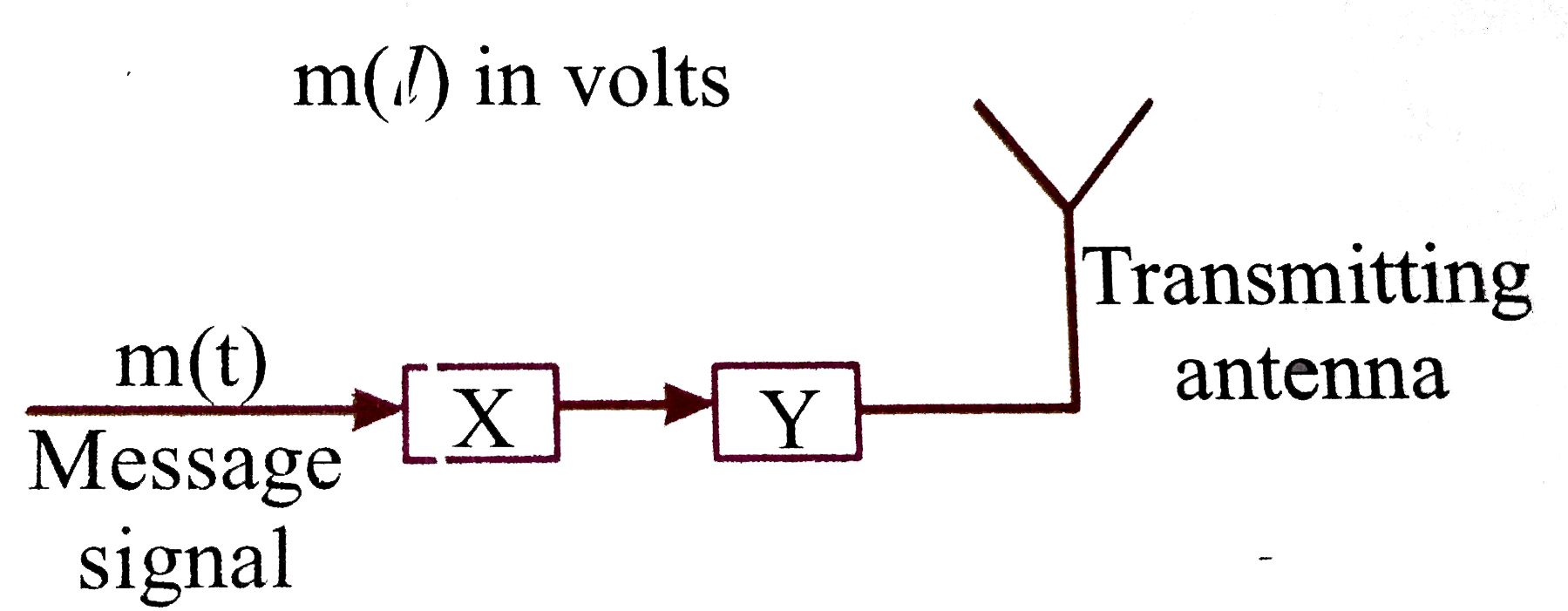Block diagram of oscillator consists of
Video Solution
Text Solution
An oscillator is an electronic circuit designed to convert dc power into ac power by feeding some of the output of an amplifier back as its input in phase. There must be an electrical connection or some kind of link (e.g, inductive coupling) between output and input of the amplifier so that there is sufficient feedback. When the feedback voltage is in phase with the input, it is called positive feedback. Then, application of direct-voltage supply to the circuit is sufficient to start and maintain electrical oscillations at some (usually) high frequency to which the system is resonant.
A simple oscillator consists essentially of :
(1) a frequency-determining network, such as a resonant tank circuit, which also works as feedback network
(2) a transistor amplifier which is the active element.
With positive feedback, the output current of the amplifier will be right phase to increase the alternating current in the resonant circuit. The oscillations then build up in amplitude until the power osses in the circuit ure equal to the power that the amplifer can develop. The natural frequency of the oscillator is close to the resonant frequency of the resonant circuit

Suppose he voltage gain without feedback of the amplifier isA=VoVi The feedback factor β back to the input, Vi=Vf+βVo.
∴A=VoV1=1βorAβ=1
For Aβ=1, Barkhausen's criterion states that the phase shift of the feedback voltage will be zero or integral multiple of 2π rad, i.e., there will be positive feedback
The voltage gain with feedback, Af, for the system is Af=A1−Aβ
Thus, for the frequency for which Aβ=1,Af, will be infinite, i.e., the circuit will operate without any external signal voltage, which means to circuit will oscillate at that frequency.
|
Topper's Solved these Questions
- EXPLANATION, CHARACTERISTICS AND PROPERTIES Book:NAVNEET PUBLICATION - MAHARASHTRA BOARDChapter:EXPLANATION, CHARACTERISTICS AND PROPERTIES Exercise:Communication Systems
Explore 7 Videos
- EXPLANATION, CHARACTERISTICS AND PROPERTIES Book:NAVNEET PUBLICATION - MAHARASHTRA BOARDChapter:EXPLANATION, CHARACTERISTICS AND PROPERTIES Exercise:Assignments
Explore 2 Videos
- EXPLANATION, CHARACTERISTICS AND PROPERTIES Book:NAVNEET PUBLICATION - MAHARASHTRA BOARDChapter:EXPLANATION, CHARACTERISTICS AND PROPERTIES Exercise:Atoms, Molecules and Nuclei
Explore 6 Videos
- EXPERIMENTS AND DIAGRAMSBook:NAVNEET PUBLICATION - MAHARASHTRA BOARDChapter:EXPERIMENTS AND DIAGRAMSExercise:ATOMS, MOLECULES AND NUCLEI
Explore 1 Video
- INSTRUMENTS : CONSTRUCTION AND WORKING Book:NAVNEET PUBLICATION - MAHARASHTRA BOARDChapter:INSTRUMENTS : CONSTRUCTION AND WORKING Exercise:Semiconductors
Explore 6 Videos
Similar Questions
Knowledge Check
Tank circuit of oscillator consists of
AL and C in parallelBRC in seriesCL and C in seriesDRC in parallelp-block consists of
AmetalsBnonmetalsCmetalloidsDall of theseFind the 'wrong' component from the following. An electronic oscillator consists of
Aan amplifierBa tank circuit or oscillating circuit.Cexternally applied input signal.Dfeedback network.
Draw a block diagram of a communication system.
View SolutionExplain the elementary idea of an oscillator with the help of a block diagram.
View SolutionExplain the elementary idea of an oscillator with the help of block diagram .
View SolutionFigure shows a block diagram of a transmitter. Identify the boxes X and Y ?

View SolutionThe velocity-time diagram of a harmonic oscillator is shown in the adjoining figure. The frequency of oscillation is

View Solution

